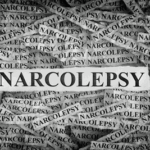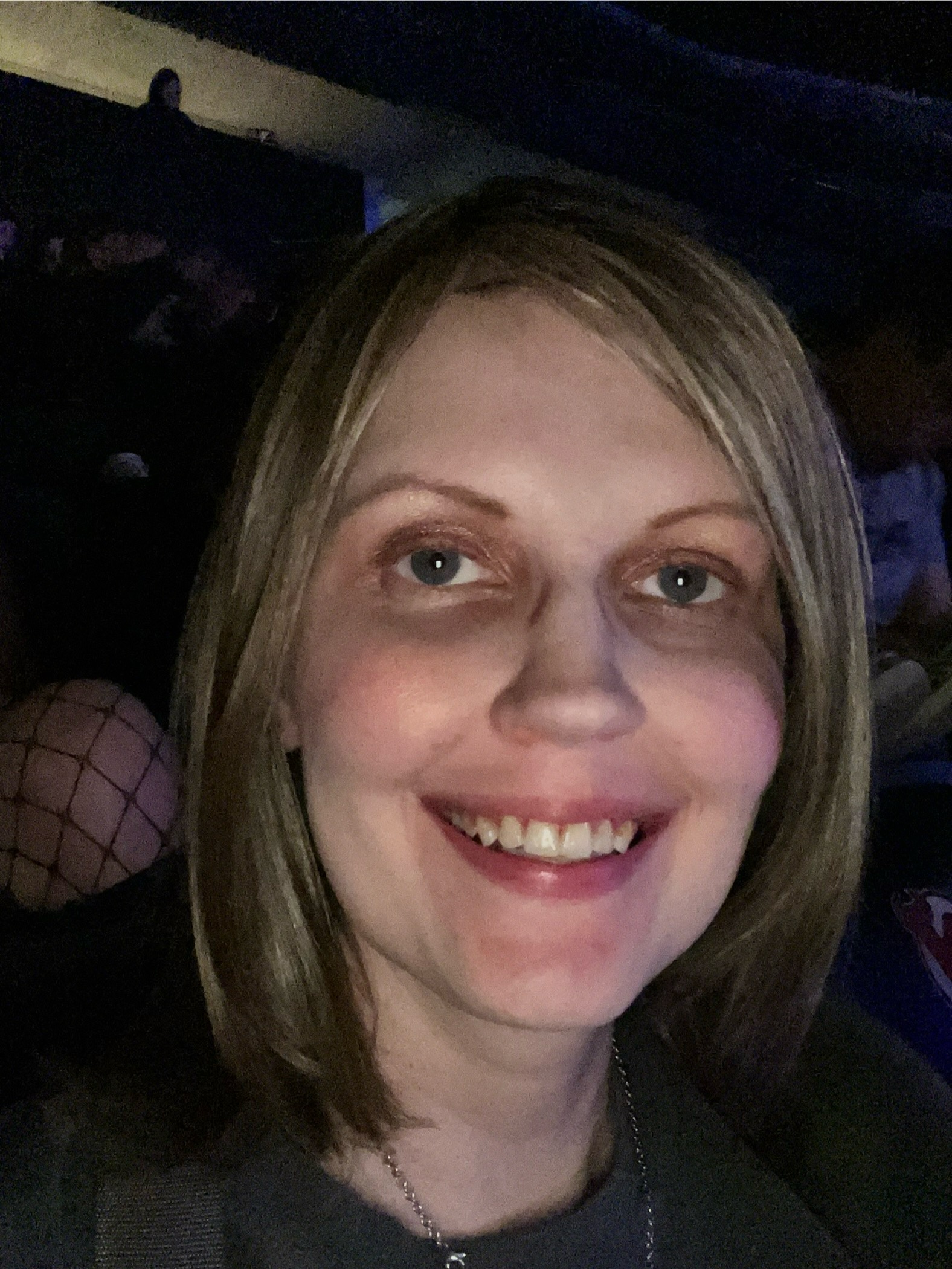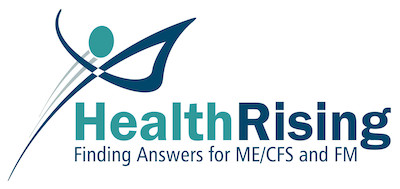

Three years ago, I had several discussions with a retired ME/CFS/FM doctor (who also had ME/CFS/FM) named Frank Perrino. Perrino was full of interesting ideas about these diseases, but at one point, our conversations abruptly stopped. I tried but failed to get back in touch with him for a couple of years. Finally, with the recent Tonmya approval, I decided to publish my write-up of our talks, which focused on sleep. Unfortunately, Dr. Perrino never went over this post.
After a bout of meningitis triggered a chronic fatigue condition as a child, everything changed for Frank Perrino. While the other kids played on the field, he felt like his shoes were filled with 100-pound weights. Looking back, he can remember only a couple of days when he was full of energy and the world seemed bright.

Perrino felt like he was dragging a 100 lb ball around – until he tried Xyrem.
Still, he plodded on and made it through medical school. At one point, he was diagnosed with sleep apnea and put on a CPAP machine, which helped, but not as much as he’d hoped.
Perrino was 45 years old when something happened that changed his life. While researching a new sleep compound called Xyrem, his doctor, Neil Feldman, asked him to be a human guinea pig. Feldman was worried that Xyrem would cause the sleep in people with sleep apnea to collapse, not get better, and he wanted to test the drug on Perrino first.
Instead, the opposite happened. Perrino’s fatigue, sleepiness, brain fog, and depression disappeared; his energy returned as he made a near full recovery. He’s been on Xyrem ever since.
The GIST
-
Are some people with ME/CFS/FM on the narcoleptic spectrum Dr Mullington’s sleep study will provide some answers.
Three years ago, I had several discussions with a retired ME/CFS/FM doctor (who also had ME/CFS/FM) named Frank Perrino, focusing on the sleep problems in these diseases. At some point, we drifted out of touch, and Perrino did not review this post. With Tonix’s Tomnya’s approval, though, I thought it was time to publish it.
- After a bout with spinal meningitis as a child, Perrino came down with ME/CFS. Decades later, now a doctor, he tried a medication called Xyrem, which changed his life. His fatigue, sleepiness, brain fog, and depression disappeared, and his energy returned as he made a near full recovery/
- Casting about for an answer, he realized that many of his symptoms fit a diagnosis of narcolepsy. Using sleep studies and by doing extensive patient exams, Perrino came to believe that many of his ME/CFS/FM patients fit somewhere in what he called a narcoleptic spectrum.
- Perrino found that many of his patients entered into REM sleep too early, experienced dreams while going to sleep or upon wakening, some forms of sleep paralysis while awakening, and cataplexic attacks (sudden losses of muscle tone during the day, which could cause everything from falling down to slurred speech to heavy feeling muscles).
- Perinno said most of the focus in narcolepsy is on the stereotypical narcoleptic who suddenly falls asleep during the day, but believes narcolepsy has a spectrum aspect to it and that Doctors can get too tied into overly restrictive diagnostic criteria. (Because he also suffered from insomnia, he did not fit the criteria).
- Perrino recommended that ME/CFS/FM patients do the Epworth sleepiness scale test and get a multiple sleep latency test (MSLT), which is done the day following a sleep study. The MSLT assesses daytime sleepiness by determining how quickly you fall asleep after the lights are turned out.
- A positive response during the MSLT, having cataplexic attacks, and/or having low orexin levels in the spinal fluid are all diagnostic of narcolepsy.
- For years, Perrino regularly prescribed Xyrem (or GHB), which regulates the sleep/wake cycle. The drug was cheap and easy to get, and while the drug could be touchy, he reported remarkable success with it.
- After Xyrem became associated with date rape (GHB plus alcohol can cause loss of consciousness), the drug was listed as a Schedule I drug. Xyrem became approved for narcolepsy, but under restricted conditions, and after Jazz Pharmaceuticals ‘ costs skyrocketed, it became hard to get.
- Perrino’s idea that narcolepsy is a spectrum disorder is being vindicated. While narcolepsy has traditionally been divided into two categories: one with cataplexy (which includes a loss of orexin-producing neurons in the hypothalamus) and one without cataplexy, other variants have shown up.
- While some people have a complete loss of the hypocretin neurons, others show partial losses or fluctuating levels of hypocretin. It’s now recognized that the symptoms of cataplexy can range from sometimes subtle states of daytime drowsiness to abrupt falls.
- We’re about to learn more about a key narcoleptic neuropeptide called orexin-A in ME/CFS. The Open Medicine Foundation-funded study by Dr. Mullington, is the first to measure orexin-A – the substance that Xyrem enhances – in ME/CFS patients’ cerebrospinal fluid samples. (Besides the sleep/wake cycle, orexin is also involved in energy homeostasis and autonomic nervous system regulation.)
- While low orexin-a levels are not necessary for narcolepsy, Mullington’s study could uncover a narcoleptic-like subset in ME/CFS.
- That could help on the treatment end, as 26 orexin-enhancing drugs are in the pipeline and one is up for FDA approval this year. Several more are showing promising results in phase 2 studies. Orexin-enhancing drugs are clearly a growth field.
A New Approach to ME/CFS and Fibromyalgia
Perrino subsequently became board-certified in sleep and dedicated his career to working with people who had similar symptoms, i.e., chronic fatigue syndrome (ME/CFS) and fibromyalgia, and others suffering from non-restorative sleep.
Back then, sleep medicine was in its infancy, and Perrino didn’t know why he responded so well. Casting about for an answer, he found that he mostly fit the profile for narcolepsy: he had the wild dreams, sometimes dreamt while he was awake, had daytime sleepiness, etc. He had insomnia, though, and narcoleptics weren’t believed at that time to have trouble falling asleep at night – they had trouble staying awake during the day.
Sleep studies revealed a high prevalence of alpha and delta waves during
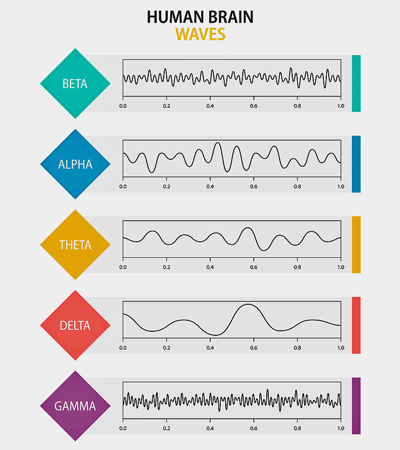
Perrino reported that he consistently found high levels of alpha waves (blue) during sleep in his patients.
deep sleep in his ME/CFS/FM patients. While the slow and deep delta waves herald the transition to deep sleep, alpha waves shouldn’t be present at all. They indicate that the brain is more awake than asleep at precisely the time it should be enjoying its deepest sleep.
While the sleep studies were revealing, Perrino found his patients’ case histories to be quite helpful. Perrino had been mentored by an “old-school” doctor who took extensive histories and physical examinations of his patients. While they took a great deal of time, he believes his detailed and hands-on approach was highly beneficial.
“My patients taught me an awful lot. I really listened to them; when did the symptoms start, what’s happened to them over the years, family history to put a really complete picture.”
Narcolepsy
Over time, he came to believe that many people with these conditions had a sleep-wake instability similar to narcolepsy.
Some people with narcolepsy have reduced orexin-A (hypocretin) levels. Orexin-A is a neuropeptide produced in a small cluster of cells in the hypothalamus, which regulates our circadian rhythm; that is, these neurons ensure that we’re awake during daytime and asleep at night. There is damage to the neurons that produce orexin-A occurs in narcolepsy type-1 (NT-1). Interestingly, infections appear to be a common trigger of NT-1.

Low orexin levels are often found in narcolepsy. Orexin levels are being assessed in Dr. Mullington’s ME/CFS sleep study.
If orexin-A-producing neurons in the hypothalamus get damaged, the brain may be unsure if it’s time to sleep or be awake. The sleep-wake cycle goes kablooey with wakefulness signals popping up at night and sleep signals popping up during the day.
Narcoleptics tend to enter REM sleep quickly and have trouble attaining stage 3 or the deep sleep stage. The lack of deep sleep produces all sorts of problems: inflammation, reduced levels of neurochemicals like serotonin, toxin buildup, and reduced growth hormone levels.
Signs of Narcolepsy
Excessive daytime sleepiness is to narcolepsy what post-exertional malaise is to ME/CFS. You can’t have one without the other. It manifests as people feeling uncontrollably drowsy or sleepy during the day, having difficulty focusing, experiencing “sleep attacks” (suddenly falling asleep), and problems staying alert.
Vivid dreams, particularly while falling asleep or upon waking, are one sign. Another sign is something called sleep paralysis – a feeling like you can’t move a muscle upon waking. Sometimes this can be quite subtle and manifest as heaviness. Walking during sleep or doing some other automatic behavior (writing) is another sign of narcolepsy.
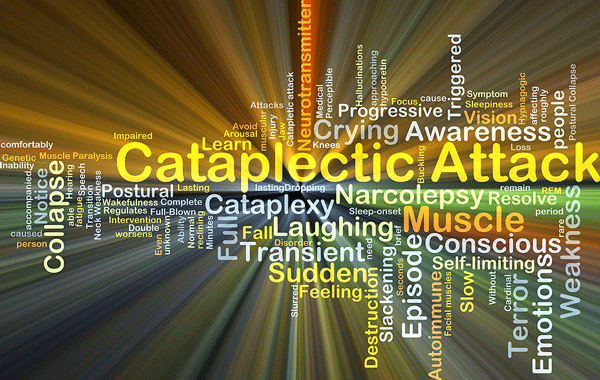
Cataplexy – a sudden loss of muscle tone – can manifest in several ways including from falling down, to slurred speech, to heavy feeling muscles.
A strange condition called cataplexy – which is almost unique to narcolepsy – can also occur. During cataplexy, muscle tone suddenly and temporarily drops, potentially causing the person’s knees to buckle and have them fall to the ground, their jaws to drop, their speech to become slurred, and their muscles to feel weak and heavy. Sometimes they can’t move a limb for a while. While some symptoms are dramatic (falling to the ground), it’s now recognized that other, more subtle symptoms (muscles suddenly feeling heavy) can occur.
Oddly enough, the cataplexic “fit” often occurs in response to a sudden emotional swing, like a surprise or even hearty laughter. Perrino said sometimes people don’t notice that it’s been happening until it’s brought to their attention.
Other symptoms are more general. Having your wake center activated during sleep, or having your sleep center activated during waking, will cause some very recognizable symptoms: fatigue, pain, poor attention, anxiety, and depression.
Perrino’s Results
When Perrino started, the vast majority of doctors did not believe narcolepsy or its connection to ME/CFS/FM existed. (I suspect they still don’t). Perrino, though, was getting good results with patients doctors didn’t know what to do with: people who didn’t have sleep apnea, for instance, but who clearly had sleep problems and tons of fatigue.
Perinno said most of the focus in narcolepsy is on the stereotypical narcoleptic who suddenly falls asleep during the day, but believes narcolepsy has a spectrum aspect to it and that doctors can get too tied into overly restrictive diagnostic criteria. He believed that narcolepsy can be extremely variable between individuals, and that, in his experience, it’s more likely to cause insomnia in these diseases than excessive sleep.
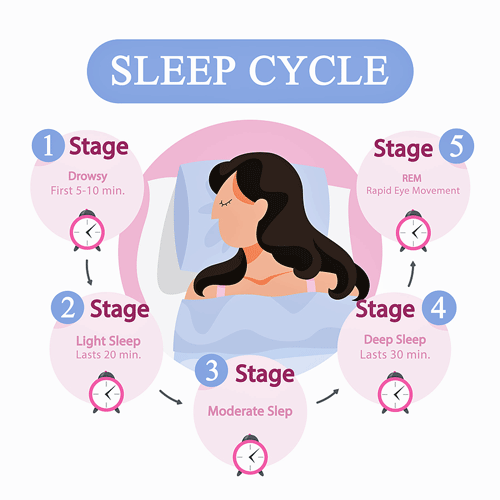
Dr. Perrino reported that an early entry into REM sleep was suggestive of narcolepsy.
Having had chronic fatigue for most of his life, Perinno said he was not going to ignore abnormal data just because it didn’t fit into a classic pattern. If some people didn’t meet the entire criteria for narcolepsy, but they appeared to be heading in that direction, he would try to treat it.
Over time, he reported that he’d treated over 1,000 ME/CFS and FM patients – many of whom met his criteria for narcolepsy. (Dr. Perrino is no longer practicing.) Perrino felt that many people with ME/CFS/FM do not fit the typical narcoleptic profile but have narcoleptic aspects and can be helped with narcoleptic drugs.
Perrino looked for abnormal alpha/delta patterns and an irregular pattern of the sleep stages. Stage 1 and stage 2 sleep should first alternate, and then stage 3 sleep should kick in. At around 90 minutes, a burst of REM sleep should occur. The REM should occur in 3/4 distinct stages – each one a bit longer.
If early onset REM sleep occurred at around 60 minutes, he suspected the patient had a narcoleptic profile. It might not be classical narcolepsy, but Perrino believed it was abnormal.
The Xyrem (Sodium Oxybate) Saga
That brings us to Xyrem. Perrino reported that he found Xyrem a potent but safe sleep inducer when used correctly. Since Xyrem triggers the same mechanism that the brain is using to regulate the sleep-wake cycle, it produces about as normal deep delta wave sleep as you get. Since Perrino was finding plenty of abnormal delta wave sleep in his patients, the drug seemed made for order for ME/CFS/FM. He called it an amazing product.
That worked quite well when the treatments were easily available and dirt cheap. When the standard treatment for narcolepsy/hypersomnia became very expensive, though, the criteria needed to meet the definition became more restrictive over time. Earlier in his career, for instance, a patient didn’t need a sleep study to qualify for a narcoleptic drug – all they needed were the correct symptoms.
He noted, though, that Xyrem is not an uncomplicated drug and can cause a host of side effects and be dangerous if used improperly. Overall, though, the response was excellent. For instance, he found that some patients did better on two doses, a smaller loading dose during the day and a larger dose at night. He said he was the top prescriber of the drug in the U.S. for 15 years.
From Dirt Cheap to Unaffordable
The advent of Xyrem and its subsequent listing as a date rape drug changed all that. From its humble beginnings to today, Xyrem has had an extraordinarily twisted history.
A sodium salt of γ-hydroxybutyric acid, or GHB, Xyrem, or sodium oxybate, is a natural chemical found in very small amounts in the brain. According to Wikipedia, the attempt to turn GHB into a medical drug began in the 1960s when Dr. Henri Laborit began using it to help understand GABA.
GHB was intermittently used as an antidepressant and anesthetic, and to treat alcohol addiction and narcolepsy in Europe from the 1960s onwards. The compound really took off in the 1990s, though, when it was introduced in the U.S. as a dietary supplement and marketed to bodybuilders to help with sleep and reduce weight.
Incidents of vomiting, vertigo, loss of consciousness, and date rape began popping up. (When used at high doses and in combination with alcohol, GHB can cause people to black out.)

Noting Xyrem’s use as a date rape drug, the FDA denied approval for it in fibromyalgia
In 2000, the Hillory J. Farias and Samantha Reid Date-Rape Prevention Act of 2000 designated GHB as a Schedule I drug; i.e., a drug with a high potential for abuse like heroin or cocaine (or marijuana for that matter) which cannot be used safely even under medical supervision and which has no medical uses.
Despite Congress’s affirmation that the drug had “no medical uses”, the FDA worked with Orphan Medical, a pharmaceutical company devoted to rare diseases, to test it, and approved it for use in narcolepsy in 2002. The drug came, though, with a “strict risk control strategy” to keep it from being diverted for illegal uses.
In 2004, Orphan Medical was purchased by Jazz Pharmaceuticals, which quickly got into trouble for its zeal in marketing the product to doctors. Sales representatives had apparently been touting the drug to doctors to use off-label for fibromyalgia and symptoms like fatigue, insomnia, chronic pain, depression, and others. Once a drug is given FDA approval, the drug is often used off-label for other conditions, and doctors have generally been given free rein in promoting drugs they found useful for other conditions.
In what one former FDA official called “a very, very scary development,” Dr. Peter Gleason was arrested in 2006 for promoting off-label use of Xyrem at medical meetings sponsored by Jazz Pharmaceuticals. Gleason’s controversial arrest sent a shock wave across the pharmaceutical industry and the medical profession.
Gleason said he started prescribing the drug because other sleep drugs were addictive or had severe side effects and because it worked better. Other doctors had found the drug helped with diseases like fibromyalgia and chronic fatigue syndrome.
Gleason. though, was charged with four felonies, faced $1 million in penalties and 28 years in prison, and had his finances frozen – requiring him to turn to public assistance for legal help. Four years later, at the end of his rope, Gleason pleaded guilty to a federal misdemeanor and was sentenced to a $25 fine and one year probation. His career ruined and his finances in shambles, Gleason committed suicide in 2011. A year later, the felony conviction of a sales representative, who’d been indicted with Dr. Gleason and who continued to fight the charges, was overturned.
Jazz Pharmaceuticals ended up paying $20 million in fines, but then turned to an even bigger market – fibromyalgia. (Perrino thought Jazz should have embarked on a large educational campaign to help doctors recognize the symptoms of narcolepsy.) Several seemingly successful large fibromyalgia trials occurred in the late 2000s, but the FDA rejected the application for fibromyalgia in 2010. Dr. Roland Staud, a fibromyalgia researcher, disagreed, stating that the drug improved sleep, increased slow-wave sleep duration as well as delta power, and reduced frequent night-time awakenings, pain, and fatigue.

After Xyrem became a Schedule I drug, its cost skyrocketed.
Not to worry about Jazz Pharmaceuticals, though. They were about to do really well. In 2013, Jazz Pharmaceuticals raised the price of Xyrem by 841%, earning the company a cool $569 million. Today a 180ml bottle (about 3/4 cup) costs $6,284 or about $100,000/year, giving Jazz Pharmaceuticals a nice $1.7 billion payback for selling this simple and easy-to-make compound. (Homemade black market GHB sells from $5-25).
In 2021, the FDA approved a slightly different formulation of Xyrem with less salt in it called Xywav for idiopathic hypsomnia – a condition in which people sleep for nine or more hours a day but still don’t feel refreshed.
Jazz Pharmaceuticals now has competition. Generic forms of Xyrem (Sodium Oxybate Oral Solution (0.5 g/mL – Hikma Pharmaceuticals USA Inc. and Amneal Pharmaceuticals NY LLC) came onto the US market in 2023. They carry the same black box warning and restrictions as Xyrem. While cheaper, they are still very expensive – costing about 5K a month if my numbers are correct.
Diagnosing Narcolepsy
Perrino recommends taking the Epworth sleepiness scale test and getting the multiple sleep latency test (MSLT) done during a sleep study.
The MSLT test requires that you stay at the sleep center the next day. After being kept awake for two hours, the sleep techs begin a cycle that occurs three to four times. The lights are turned off, and you’re monitored to see if you fall asleep. In narcolepsy, average sleep latency is less than 8 minutes, and REM sleep starts soon after falling asleep in at least two of the five naps (so-called “sleep onset REM periods”). This pattern is highly suggestive of narcolepsy.
Low levels of orexin-A in the cerebrospinal fluid and experiencing cataplexy are two other diagnostic criteria for narcolepsy. (One of three criteria must be met to be diagnosed with narcolepsy.)
Perrino Disappears
Perrino called ME/CFS/FM patients “extraordinarily complicated” and didn’t believe that narcolepsy is the full answer. He felt that immune dysfunction and dysautonomia are also involved.
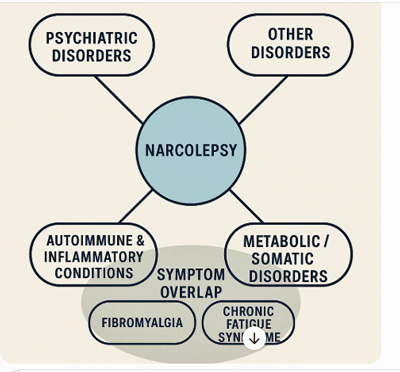
Narcolepsy is not currently considered a comorbidity in ME/CFS/FM but its symptom overlap is high.
We were going to continue Perrino’s thoughts on those aspects of ME/CFS/FM when our communication suddenly ceased. Attempts over the next couple of years to contact him failed. I was very much surprised as he had contacted me and was quite eager to share his thoughts on these diseases.
Xyrem had been a life-saver for him personally, but when I last heard from him, he was having trouble getting the drug. I wonder if that had something to do with it.
In the end, I think what Perrino wanted most was a deeper exploration of the narcoleptic aspects of ME/CFS/FM. The careful patient histories, sleep studies, and his own and his patients’ success with Xyrem led him to believe that ME/CFS/FM patients often fell somewhere on the narcoleptic spectrum.
Narcolepsy, ME/CFS/FM, and Long COVID
While ME/CFS/FM and long COVID display similar symptoms (fatigue, unrefreshing sleep, brain fog, dysautonomia), they are considered separate diseases.
One symptom, daytime sleepiness, which is found in all three, struck me, as a sleep study I did found that once the lights were turned out during the day, I quickly fell asleep. I was characterized with severe daytime sleepiness. I do not, however, have other symptoms of narcolepsy
Perrino’s idea that narcolepsy is a spectrum disorder is being vindicated. While narcolepsy has traditionally been divided into two categories – one with cataplexy (which includes a loss of orexin-producing neurons in the hypothalamus) and one without cataplexy – other variants have shown up.
While some people have a complete loss of the hypocretin neurons, others show partial losses or fluctuating levels of hypocretin. It’s now recognized that the symptoms of cataplexy can range from sometimes subtle states of daytime drowsiness to abrupt falls.
Narcolepsy also overlaps with idiopathic hypersomnia. (One of the RECOVER Initiative’s clinical trials is on hypersomnia in long COVID.) Researchers are increasingly using the umbrella term “central disorders of hypersomnolence” to describe narcolepsy types, idiopathic hypersomnia, and related conditions as a spectrum of overlapping disorders.
Getting Answers – the Mullington ME/CFS Sleep Study
We’re going to learn more about a key narcoleptic neuropeptide called orexin-A in ME/CFS. The Open Medicine Foundation-funded study by Dr. Mullington, who wrote a book chapter about the role orexin plays in sleep, is the first to measure orexin-A in ME/CFS patients’ cerebrospinal fluid samples.
Orexin-containing neurons project from the hypothalamus into brain regions that produce three factors – histamine, dopamine, and norepinephrine – that are important in sleep and may be major factors in ME/CFS overall. Besides the sleep/wake cycle, orexin is also involved in energy homeostasis and autonomic nervous system regulation. Additionally, because of orexin’s role in wakefulness and alertness, low orexin levels may be implicated in cognitive function.
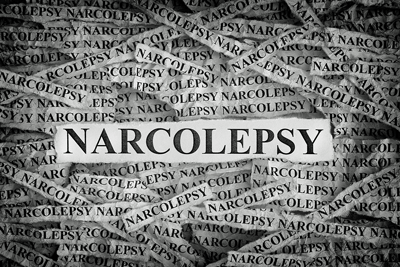
Are some people with ME/CFS on the narcoleptic spectrum? Dr Mullington’s sleep study will provide some answers.
Some studies have found a relationship between decreased orexin levels and attention deficit hyperactivity disorder (ADHD) – a condition that may have a high comorbidity with ME/CFS. While low orexin-a levels are not necessary for narcolepsy, Mullington’s study could uncover a narcoleptic-like subset in ME/CFS. The study is moving fast – results are expected by the end of this year.
That could help on the treatment end, as 26 orexin-enhancing drugs are in the pipeline and one is up for FDA approval this year. Several more are showing promising results in phase 2 studies. Orexin-enhancing drugs are clearly a growth field.
Found the Blog Stimulating?
Please Support Health Rising and Keep the information Flowing!
HEALTH RISING IS NOT A 501 (c) 3 NON-PROFIT


